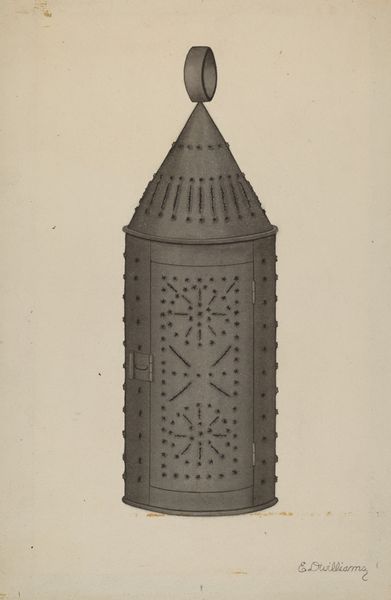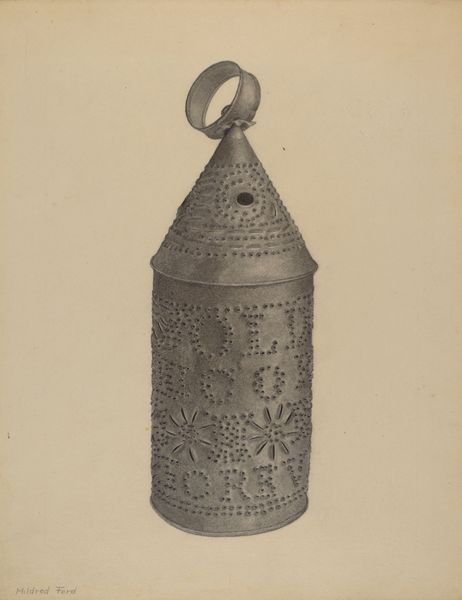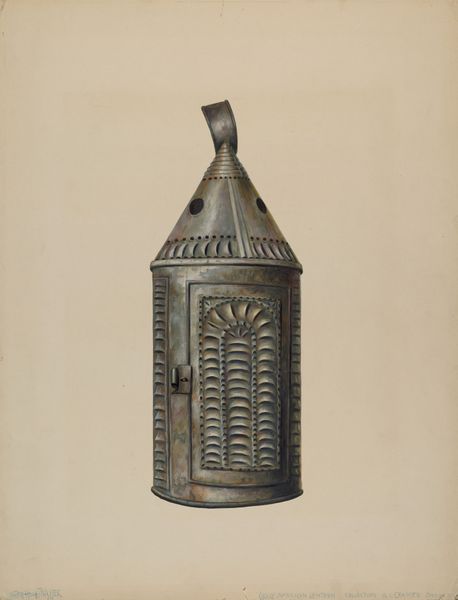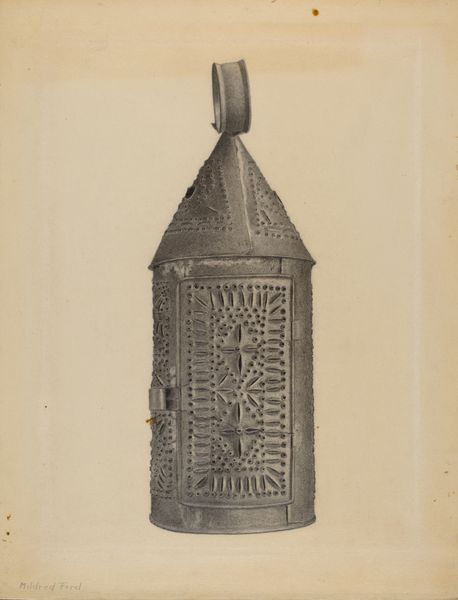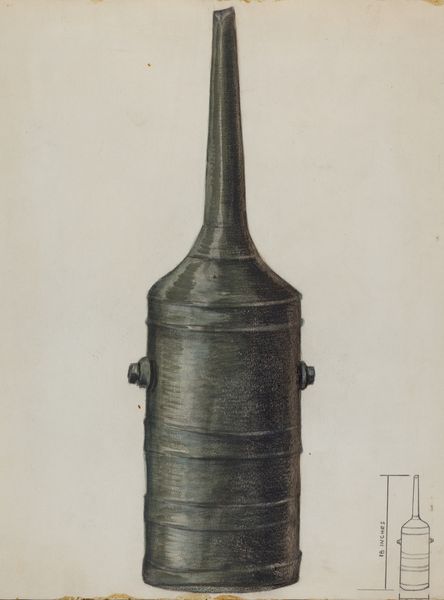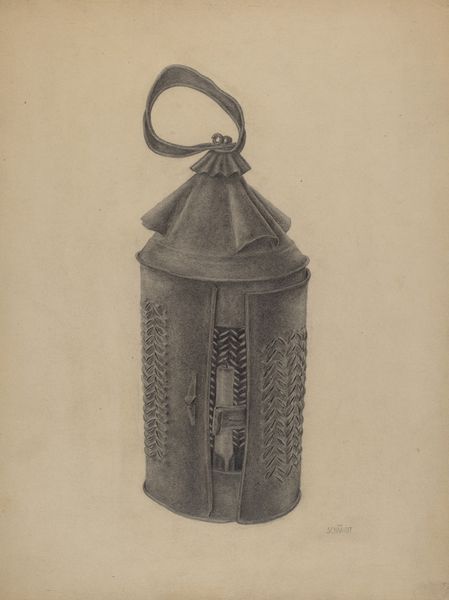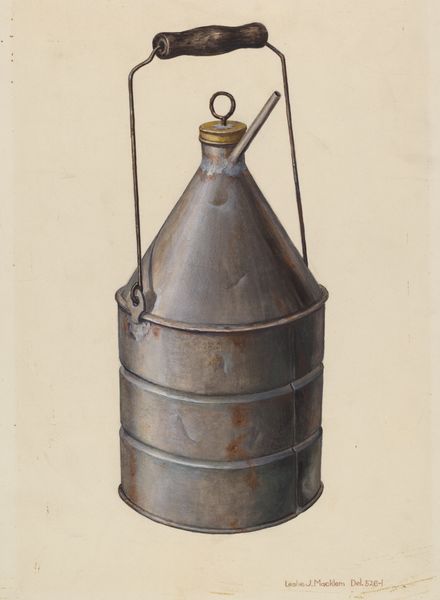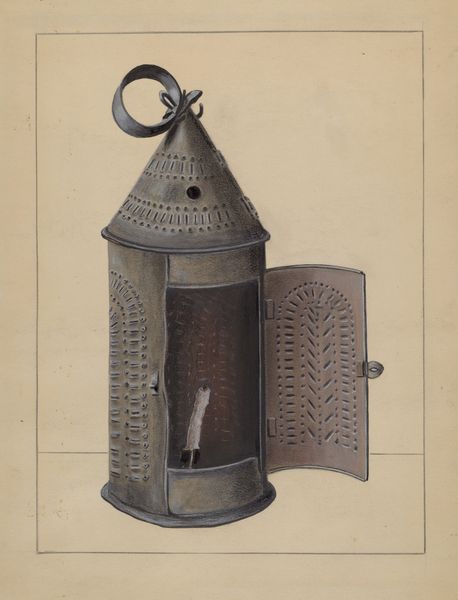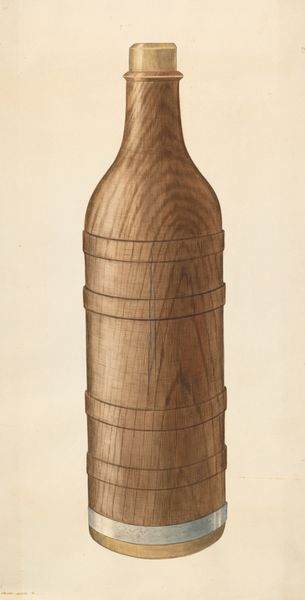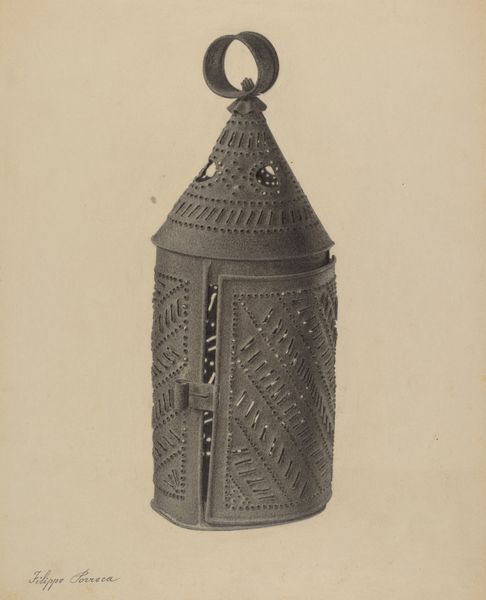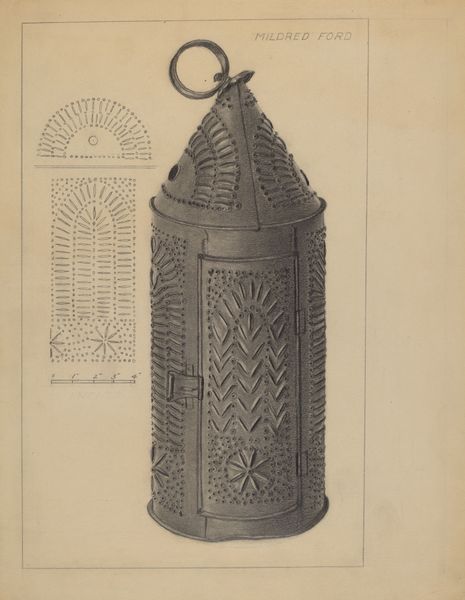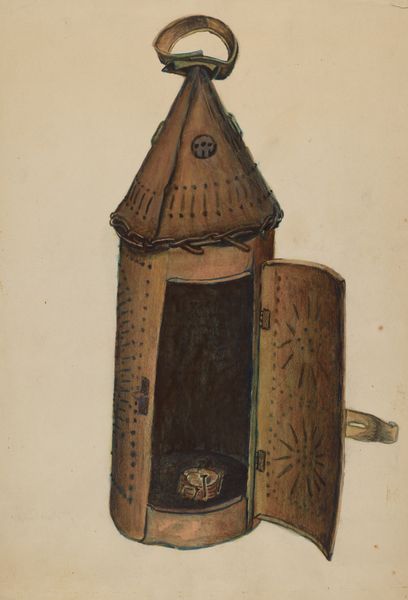
drawing
#
drawing
#
line
Dimensions: overall: 34.9 x 24.3 cm (13 3/4 x 9 9/16 in.)
Copyright: National Gallery of Art: CC0 1.0
Curator: Here we have Francis Bruner's "Pierced Tin Lantern," a drawing created sometime between 1935 and 1942. It's a very precise line drawing. Editor: It certainly is! I'm immediately struck by how meticulously rendered it is, capturing the light playing across the surface of what looks like aged metal. It has a hauntingly industrial feel. Curator: Bruner's work often focused on objects that reflected a specific era. In this case, he depicts a utilitarian item—a tin lantern, crucial for light and navigation—and, thus, provides insights into that era's technological resources, social practices related to labor and movement, and design aesthetic. Editor: I find myself wondering about the hand that crafted the original lantern, piercing each hole with such precision. Each perforation signifies human effort, not merely a manufactured commodity, hinting at the exchange between craftspeople and the broader communities. How would such an object fit into the domestic setting and impact relationships there? Curator: I think the material history here tells a broader story about accessibility. Tin was more readily available, and this sort of lantern would likely have been found in less affluent homes, offering insight into class distinctions in the American household during that time. Editor: Indeed! Considering it in relation to labor, what do the punctures tell us about pre-industrial methods versus rising industrialized societies? Was creating such a tool a personal craft and passion? Or purely for profit to get through a given workweek? Curator: That contrast between handicraft and industry is key here. The lantern may embody self-reliance and adaptation in resource-constrained times but is indicative of wider historical movements. What really engages you here about the medium itself: how is its essence distilled via lines on paper rather than the piercing action performed directly? Editor: Ultimately, Bruner's artistic choice to use drawing immortalizes this humble yet functional object, drawing our awareness back to how closely lives were interwoven in early America. It pushes one to see both the practical value and implied stories captured within what's frequently considered average or mundane. Curator: And maybe even see something of ourselves, or a shadow of our societal trajectory in it as well. The work offers a surprisingly sharp illumination, so to speak, given that our gaze now shines over a distance far surpassing that solitary light.
Comments
No comments
Be the first to comment and join the conversation on the ultimate creative platform.
